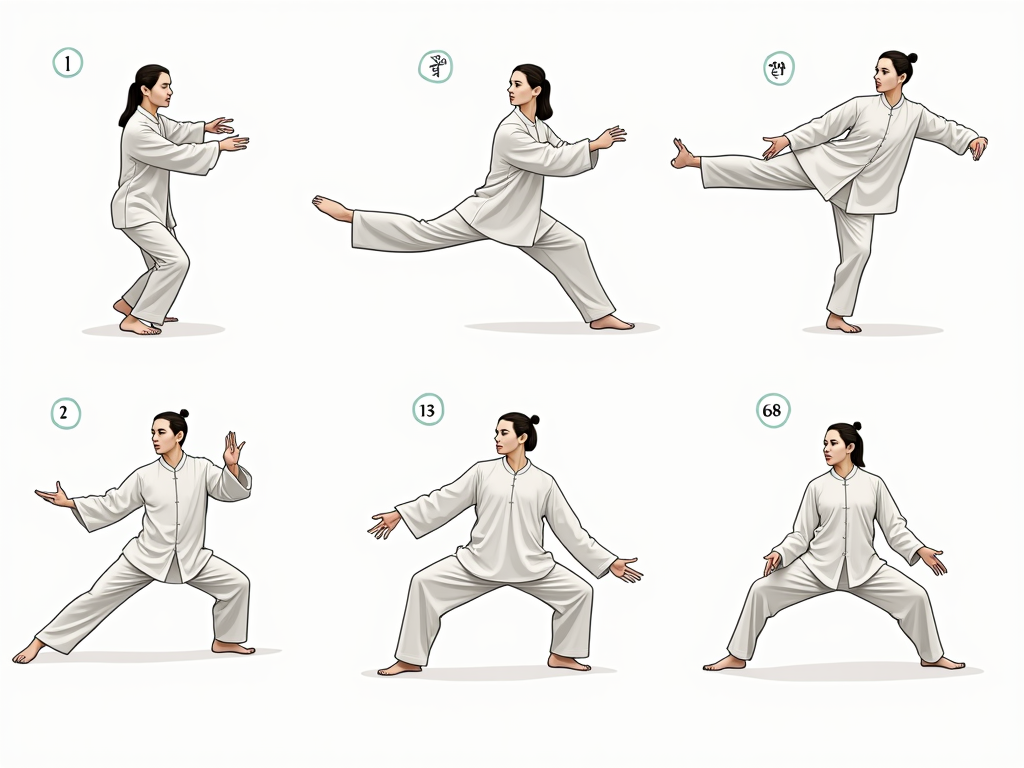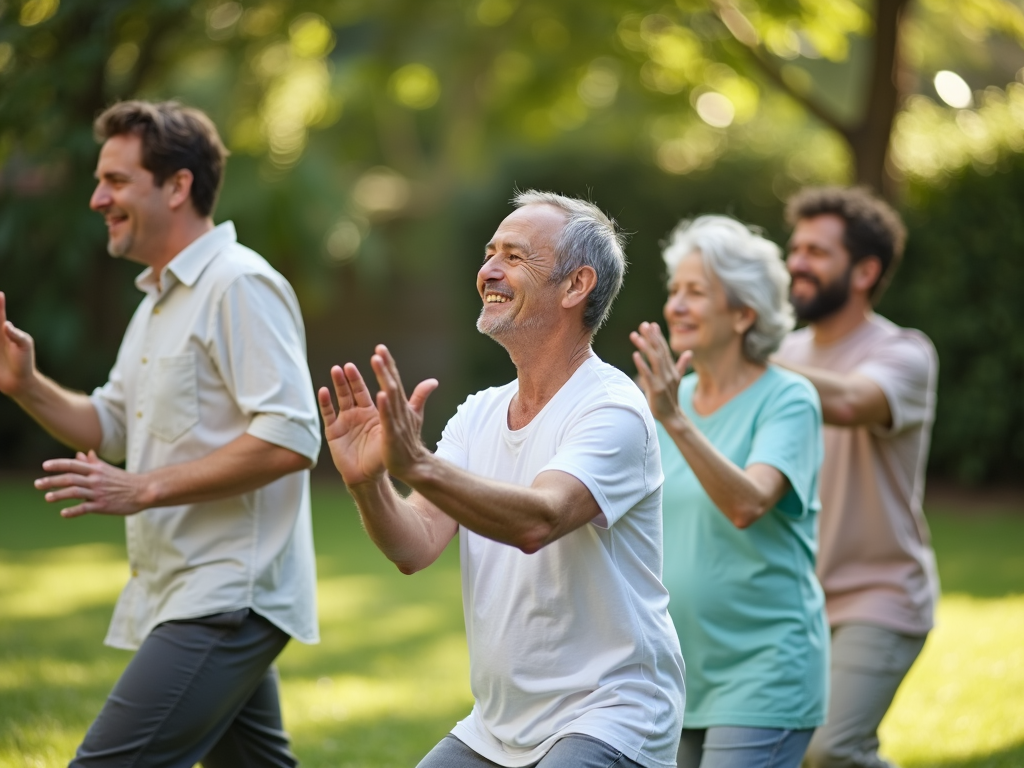Tai Chi is an ancient Chinese practice that offers numerous benefits for seniors, including improved balance and flexibility. This article explores how Tai Chi can be a valuable addition to family wellness plans, providing tips, exercises, and personal insights to help seniors and their families embrace this gentle yet powerful practice.
Tai Chi, often described as "meditation in motion," is a centuries-old Chinese martial art that combines slow, graceful movements with deep breathing and mental focus. It's particularly well-suited for seniors because it's low-impact, can be done standing or sitting, and is easily adaptable to different fitness levels. Unlike high-intensity workouts, Tai Chi emphasizes fluidity and relaxation, making it an ideal exercise for older adults looking to maintain or improve their physical and mental well-being.

One of the most significant benefits of Tai Chi for seniors is its ability to improve balance and flexibility. As we age, our balance can deteriorate, increasing the risk of falls and injuries. Tai Chi's slow, controlled movements help strengthen the muscles that support balance, such as the core and leg muscles. Additionally, the practice encourages better posture and body awareness, which are crucial for maintaining stability.
Flexibility is another area where Tai Chi shines. The gentle stretching and flowing movements help to loosen tight muscles and joints, increasing range of motion. This can be particularly beneficial for seniors dealing with arthritis or other conditions that limit mobility.
Studies have shown that regular Tai Chi practice can reduce the risk of falls by up to 45% in older adults. Moreover, it can improve overall physical function, making daily activities easier and more enjoyable.
Research has consistently shown that Tai Chi can significantly improve balance and flexibility in older adults. A study published in the Journal of the American Geriatrics Society found that seniors who practiced Tai Chi for 12 weeks experienced a 47.5% reduction in falls compared to a control group. Another study in the Archives of Internal Medicine reported that Tai Chi improved flexibility and reduced joint pain in seniors with osteoarthritis.
Beyond physical benefits, Tai Chi also offers mental health advantages. The meditative aspect of the practice can help reduce anxiety and depression, common issues among seniors. By focusing on the present moment and synchronizing breath with movement, Tai Chi promotes a sense of calm and well-being.

Tai Chi isn't just for seniors; it's a practice that can benefit the entire family. Integrating Tai Chi into family wellness plans can be a wonderful way to promote health and togetherness. Practicing Tai Chi together can strengthen family bonds, as it encourages communication, cooperation, and mutual support.
For families with seniors, Tai Chi can be a shared activity that everyone can enjoy, regardless of age or fitness level. It's a great way to spend quality time together while also reaping the physical and mental benefits of the practice. Plus, it can be a fun and relaxing way to de-stress after a long day.
To get started, families can look for local Tai Chi classes that cater to all ages or find online resources and videos that they can follow together at home. It's important to choose a pace and style that works for everyone, ensuring that the practice is enjoyable and accessible.

If you're a senior interested in trying Tai Chi, here are some tips to get you started:
- Start Slow: Begin with simple movements and gradually increase the complexity as you become more comfortable.
- Find a Qualified Instructor: Look for a Tai Chi instructor who has experience working with seniors. They can provide modifications and ensure you're practicing safely.
- Practice Regularly: Consistency is key. Aim for at least 20-30 minutes of Tai Chi practice a few times a week.
- Listen to Your Body: Pay attention to how your body feels and don't push yourself too hard. Tai Chi should be gentle and relaxing.
Here are a couple of simple Tai Chi exercises you can try at home:
- Cloud Hands: Stand with your feet shoulder-width apart. Slowly shift your weight from one leg to the other while moving your arms in a circular motion, as if you're drawing clouds in the air.
- Golden Rooster Stands on One Leg: Stand on one leg, lifting the other knee to hip height. Hold for a few seconds, then switch legs. This exercise helps improve balance.
- Parting the Wild Horse's Mane: Stand with your feet shoulder-width apart. Step forward with your left foot, shifting your weight onto it while extending your left arm forward and your right arm back, as if parting a horse's mane. Repeat on the other side.
- Wave Hands Like Clouds: Stand with your feet shoulder-width apart. Slowly shift your weight from side to side while moving your arms in a wave-like motion, as if you're moving clouds across the sky.
As someone who has practiced Tai Chi for several years, I can attest to its transformative power. When I first started, I was skeptical about how such slow movements could make a difference. But after just a few weeks, I noticed improvements in my balance and flexibility. I felt more grounded and centered, both physically and mentally.
One of my favorite aspects of Tai Chi is its meditative quality. The focus on breath and movement helps quiet the mind and reduce stress. It's become a daily ritual for me, a time to reconnect with my body and find peace in the present moment.
I've also seen the benefits of Tai Chi in my family. My parents, who are in their 70s, have started practicing Tai Chi together. It's been wonderful to see them bond over this shared activity and to witness the positive changes in their health and well-being.
Tai Chi is a gentle yet powerful practice that offers numerous benefits for seniors, including improved balance and flexibility. By integrating Tai Chi into family wellness plans, families can enjoy the physical and mental rewards of this ancient art while strengthening their bonds. With simple exercises and regular practice, seniors can enhance their quality of life and embrace a healthier, more active lifestyle.
Discuss Here